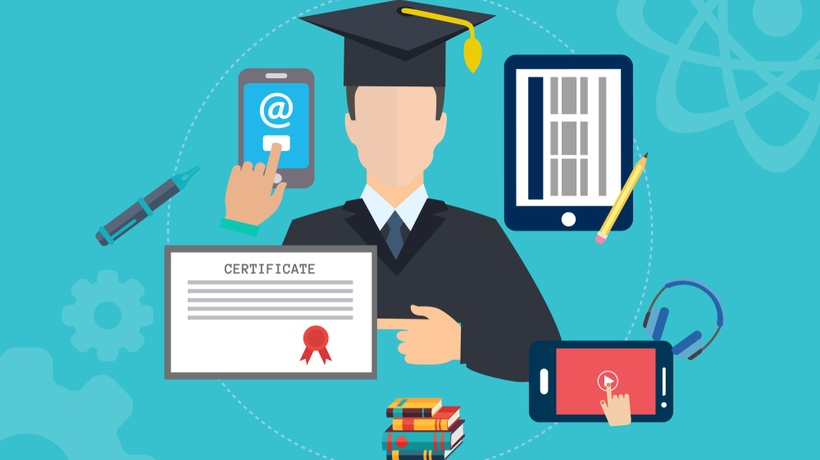What The Future Of Learning Technology Will Bring For eLearning Pros
You will have undoubtably read many ‘future of learning’ articles that predict the means and mechanisms for learning, extrapolating peripheral technologies that are entering the vernacular of L&D, but this article is different. This isn’t a crass oversimplification of technologies but a means of extending L&D’s expectation of technology and how it could serve us in the not-so-distant future.
I’m often frustrated when I read that gamification, chatbots, AR and VR are the future of L&D when they’re simply not. They are the present and are being used to varying levels of success and we – as well as more of our colleagues – may adopt them soon enough.
We seem to drool over these things like they will transform our offering by increasing engagement in our stuff exponentially, when the best they are likely to do is make our online stuff less crappy whilst we never really seek to understand what our people really want – and need.
What’s Tomorrow’s World?
Humans are pretty rubbish at imagining a future too dissimilar to what we’re currently experiencing.
In the late 1980s, I remember seeing video call technology being presented on a primetime UK TV show called Tomorrow’s World and it blew my mind! Imagine seeing somebody while you were talking with them…!?
Around the same time, I also used to dream about having a portable TV that I could watch at school.
I was a huge music fan when I was younger and spent vast amounts of time in record shops, only ever imagining what most of those records sounded like because I never thought I’d be able to afford to buy them…
And I’ve always had a strong nostalgic streak, so in my 20s, I collected VHS videos of TV shows I remembered as a child as a way of unlocking dormant emotional associations I had for them. I didn’t collect many but I got to watch Bagpuss , Chorlton and the Wheelies, and Bod again.
At each of these stages in my history, I could never have imagined having one device in my pocket that gave me instant access to all of this – and more! From the late 1970s until the mid-90s, technologies advanced but at a rate at which each advancement was just a slightly more refined version of what had existed before. LPs to CDs. VHS to DVDs. Black and white TV (yes we had a black and white TV until 1979) to color. But then… constant connectivity and ubiquitous access to the world’s information, media and people changed everything beyond anything I could have possibly imagined.
So, What Does This Teach Us About The Future?
Well, what it’s taught me is that I limit my imagination of the possible – and probable futures – if all I can imagine is a slightly more refined version of now…
Back To The Future Of L&D: How Are We Now Limiting Our Own Advancement?
In my opinion, we’re limiting ourselves in the same way I’ve described:
- We have a platform, so future platforms will be better…
- We have eLearning, so future eLearning will be more engaging…
- New immersive technologies are coming, and these will make my courses better…
No, no, no! I don’t believe that L&D will become a slightly better version of now.
To understand – and shape L&D’s future – we first need to suspend the conditions that will limit our thinking. For me, the conditions that need challenging include:
- L&D is somewhere people go – in real life or online; and
- People are interested in our ‘L&D offering’;
In the not too distant future (and I’m not the first to say this) L&D will be largely invisible as we disintermediate the development experience, connecting people with what they really need (i.e. contextually relevant information, know-how, and insights for specific organisations and roles), when and how they need them in service of their work and careers.
Too often, engagement still seems to be the holy grail for L&D, i.e. when clients aren’t engaging in legacy learning tech, L&D seek something more ‘engaging’ – rather than something that actually ‘works’. Maybe this is because L&D are more comfortable describing the way they want something delivered (i.e. gamified, mobile, interactive, AR or VR) than the results they want to see.
So, instead of the conditions above, imagine that:
- Similar to Minority Report, technology is an extension of the human working experience, increasing our capacity and capability by providing relevant and useful insights that accentuate our human abilities;
- We are able to understand what people are expected to achieve and can anticipate points of friction precipitated by their inexperience. We also understand specifically where our efforts, as L&D, have the biggest impact on performance and organisational capability;
- The cultural aspect and nuances of joining a company; a new team; or operating at a different level in the organisation are an integral part of the assimilation process, supporting and guiding our clients through a continuous mixture of digital and real-life experiences, grounded in everyday interactions;
- What people need is surfaced for them at their point of need, when, where and how they need it, rather than relying on them to search for it;
- Compliance is wedded into daily practice, alerting employees of the risks and their responsibilities as situations are anticipated and experienced;
- All of the above is largely automated and algorithms ensure that support is provided when, where and how it adds the most value to the employee, making changes when data informs;
- Continuous development no longer relates to the consumption of content – or attendance at events – but relates directly to the conscious and purposeful overcoming of difficult – or unfamiliar – situations as they arise or when it’s important to each employee;
- Business metrics are both used to diagnose areas to focus the attention of L&D as well as measure the improvements made as a result.
Of course, this doesn’t all have to be the near future of L&D. For the purpose of this piece, it’s a conversation starter. But it is so important that we stop letting existing practices and technologies hamstring our preconceptions of the future.
We also have to stop thinking about ourselves: what we want to design and deliver; and how we wish to create ‘homes’ for our offering. Instead, we must put our clients (as identifiably unique as they are) at the heart of what we do. It is only about them, their roles, their challenges, and their ambitions.
Let’s not limit our hopes and expectations of technology with our understanding of what’s out there now. Our expectations should only be limited by what is going to really solve the problems of our clients and organisations at large. There will always be new mediums of ‘delivery’ but if we focus on the real problems to solve, and the actual people involved (rather than the ‘learning’ or other L&D problems), we’ll be on the right side of the future…









